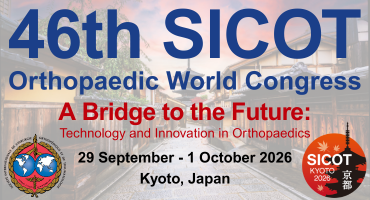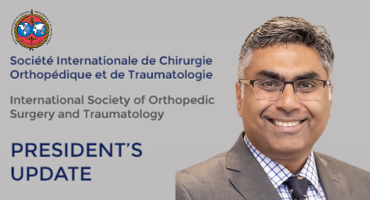An increased incidence of avascular necrosis as the predisposing aetiology for primary total hip arthroplasty in sub-Saharan Africa - a retrospective review of 1,400 consecutive patients
SICOT J. 2025;11:54. doi: 10.1051/sicotj/2025052. Epub 2025 Sep 24.
ABSTRACT
INTRODUCTION: Worldwide, more than 1 million Total Hip Arthroplasties (THAs) are performed annually, with this number predicted to increase by 37.7% by the year 2060. This places a significant financial burden on the healthcare system, with the average cost of a THA being approximately $40,000. Several factors ultimately contribute to patient outcomes and complications, including surgical approach, surgeon's experience, patient age, BMI, and most importantly, the preoperative diagnosis. Our paper aimed was to describe the various aetiologies of hip pathologies in patients presenting for primary elective THA to a tertiary academic sub-Saharan African institution.
MATERIALS AND METHODS: We retrospectively reviewed 1400 consecutive patients presenting for elective primary THA between January 2015 and December 2021. Patients' preoperative clinical notes, radiological records, and intraoperative results were independently assessed by two examiners to diagnose the hip pathology. A comparison of the presenting preoperative aetiologies was made between those seen in developed countries and those seen in more developing countries.
RESULTS: 2176 pathological hips were evaluated. Bilateral pathology was present in 56% of patients, of which 92% had the same pathology. There were 427 (31%) males and 973 (69%) females, with an average patient age of 58 ± 14.13 years and an average BMI of 31.01 ± 15.13 kg/m2. The preoperative aetiologies included primary osteoarthritis (OA) (n = 406 [29%]) and avascular necrosis of the femoral head (AVN) (n = 322 [23%]), of which (n = 162 (58%) had bilateral pathology. The primary cause of AVN was HIV (49%). Patients presenting with AVN were significantly younger (p < 0.0001) and had a lower BMI (p < 0.0001) in comparison to patients presenting for other pathologies.
CONCLUSION: This study underscores the significance of aetiology in THA outcomes and highlights the unique challenges faced in developing countries. By identifying the specific causes of hip pathology in this population, healthcare providers can better allocate resources and develop tailored treatment strategies to improve outcomes in resource-limited settings.
PMID:40990380 | PMC:PMC12459105 | DOI:10.1051/sicotj/2025052

















